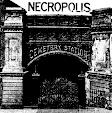In
the "Of Miracles" section of the Enquiry, Hume
makes a proto-Bayesian argument to the effect that we should assign a very low
probability to the hypothesis that a miracle has occurred, owing to his account
of the laws of nature, which such a miracle would, by definition, contradict.
He takes a law of nature to be a regularity observed to be universally
consistent across all available relevant evidence, such that if evidence in
favor of a miracle that contradicts that law is presented, we must weigh all the
prior evidence for the law against the new evidence for the miracle.
The
existence of a ghost would contradict basic principles of our modern
scientific understanding of life, the mind, and the physical fabric of reality.
According to Hume's rough model, all of the vast quantity of the mundane
observations we have made that have confirmed these principles would weigh
against whatever evidence that could be found in favor of the existence of a
ghost.
Now,
it seems that Karl Popper's account, taken simpliciter, would be at
a loss in this situation. This is because the corollary to the principle that a
universal statement, i.e. a law, can be deductively falsified by a single
contrary piece of evidence is that an existential statement, i.e. the statement
that there exists at least one instance of a given phenomenon, can be
deductively verified by a single affirming piece of evidence. However, this
means that the claim that a ghost exists would be deductively verified by
a single piece of evidence that, on parity, would be sufficient in form and
content to verify the existence of more mundane phenomena. For example, one
good-quality photograph in the right context is sufficient to prove that a bird
species thought to be extinct still lives; this occurred in 2015 with the
blue-eyed ground dove. So, in the right context, one good-quality photograph of
a ghost should be enough to prove the existence of a ghost. In practice,
however, we find that this is not the case. Despite the long history of
doctored photos and other demonstrated fakes alleging to represent evidence of
ghosts, a number of fairly good photographs of supposed
spectral events exist that have yet found no definite worldly
explanation, and scientists and the public are very far from concluding that
ghosts exist as a result. So, Popper's theory apparently needs something more
here.
However,
I'm not sure that Bayesian Confirmation Theory can fully account for what is
happening here either. The problem is that the prior probabilities we
assign to P(e) and P(h) will depend not only on our prior beliefs about
ghosts-- and this is a serious problem due to the fact that the scarcity of
evidence doesn't allow for a ready "washing out" of priors-- but also
on what we take each piece of evidence to be. The likelihood of a
photograph containing an optical artifact due to lens flare or digital
processing might be many times greater than the likelihood of a photograph
containing the manifestation of a paranormal phenomenon, but the same image
might stand as being either depending on whom we ask. This
problem appears to go beyond the scope of prior probabilities, such that even
if the inherent prior probability problem of BCT could be resolved, there would
still be a larger question as to weighing evidence and determining what it
actually represents in the grand scheme of our model of reality.

No comments:
Post a Comment